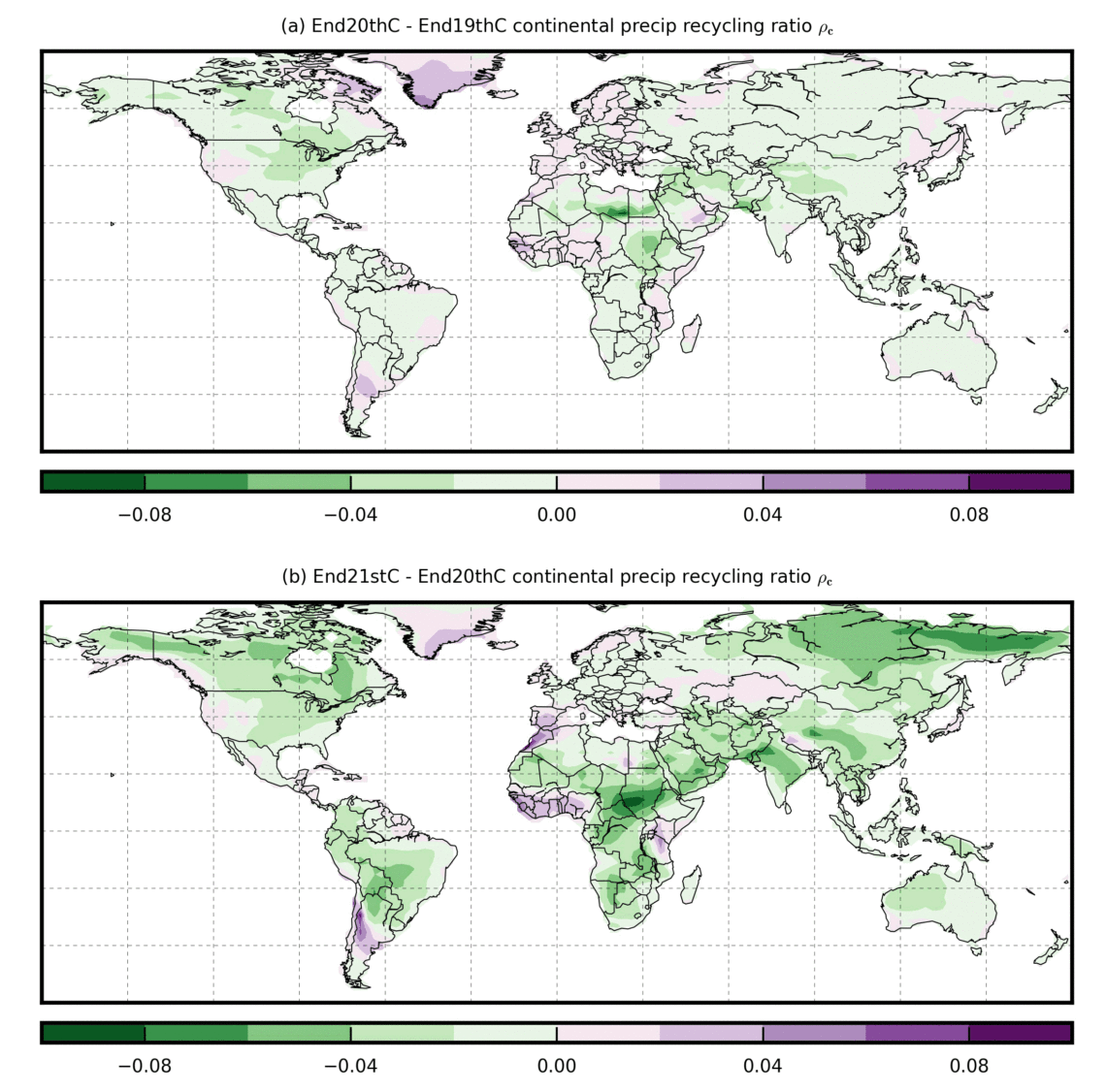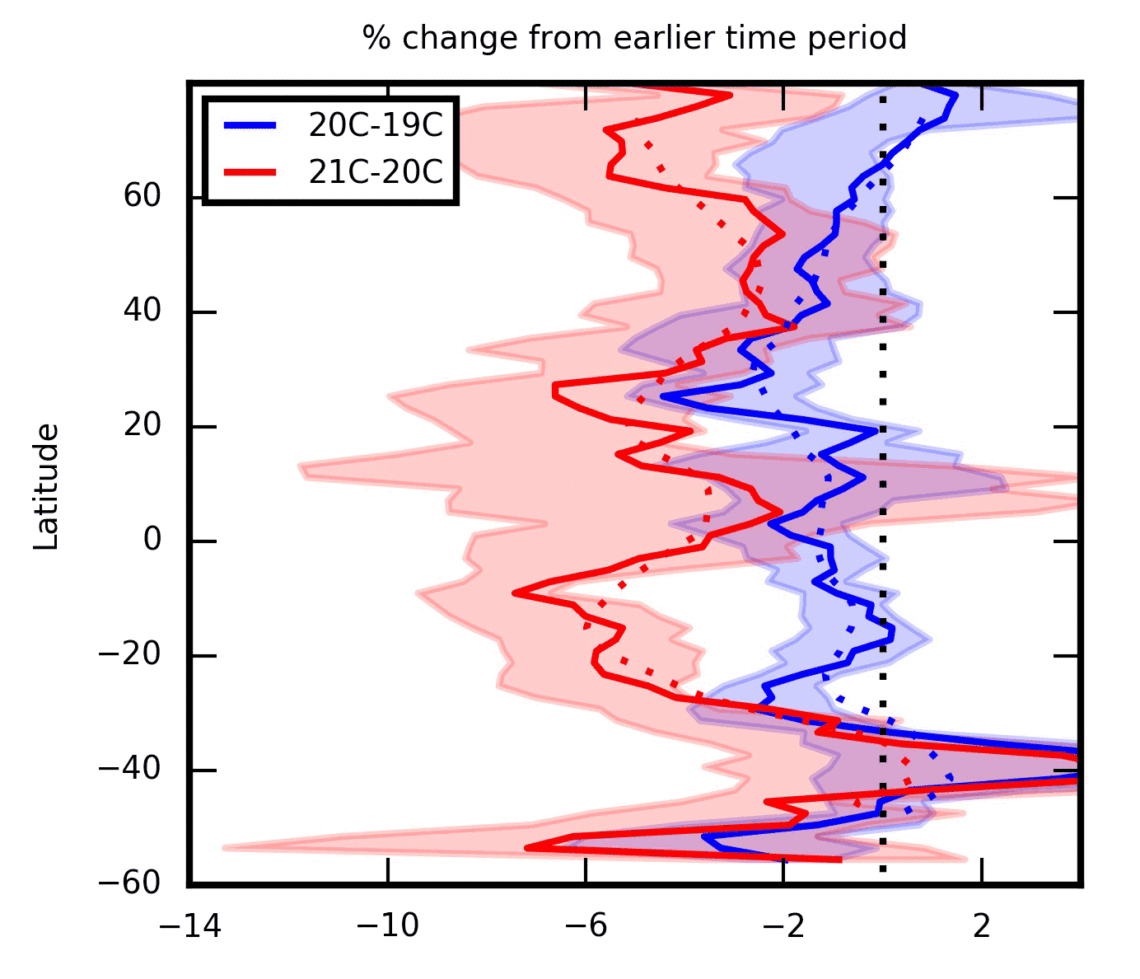October 1st, 2019
Key Findings
- This research sheds light on the global hydrological cycle and how it will change in a warming world.
- This study is the first to investigate how climate change affects the relative contributions of oceanic and terrestrial moisture to continental precipitation.
- Continental moisture recycling ratios are decreasing as global temperatures increase.
- This indicates increased prominence of oceanic influence on continental hydrology.
- The recycling ratios decrease 2-3% with each degree of global mean temperature increase.
Kirsten L. Findell, Patrick W. Keys, Ruud J. van der Ent, Benjamin R. Lintner, Alexis Berg, and John P. Krasting . Journal of Climate. DOI: 10.1175/JCLI-D-19-0145.1
In many parts of the world, water resources for humans and ecosystems are heavily dependent on precipitation. Terrestrial precipitation is fed by moisture originating as evaporation from oceans and from recycling of water evaporated from continental sources. Understanding the vulnerability of regional precipitation to changing climatic conditions and to changing land cover conditions is of critical importance to society.
The authors demonstrate that GFDL’s Earth system model ESM2G accurately captures historical continental precipitation recycling processes. Model simulations of historical and future climate show that values of continental moisture recycling ratios were higher in the past and will be lower in the future. The changes are the direct result of increasing atmospheric temperatures and evaporative demand leading to more rapid increases in evaporation over oceanic regions than over land, due to soil moisture limitations on land. The recycling ratios decrease 2-3% with each degree of global mean temperature increase.




